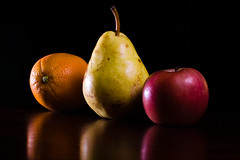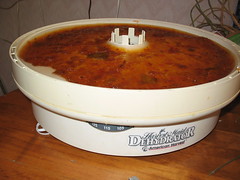 Image via Wikipedia
Image via Wikipedia
Try this, just for the heck of it. Once you’ve started incorporating raw foods into your food plans, keep adding them in and reducing the number of cooked and processed foods from your diet. Especially things like fast food, chips, cookies and snacks.
After you’ve done that for awhile, have a junk food day. If you really miss your junk food, or think you do, then plan for it. Make it truly memorable and junk-worthy.
If we were gambling types, we’d be willing to bet a LOT of money that mid-way through your junk food day, you’ll stop.
Once you’ve started incorporating raw foods into your diet, and getting most of your nutrition from them, and stayed with it for at least a couple weeks, junk food is just not going to have the same appeal to you. Because now you’re thinking about what you’re putting into your body. And if you really think about what junk food does to your body, all of a sudden it doesn’t look so good.
You know, it just happens naturally. We’ve started eating more and more raw foods in our home, and haven’t been able to touch things like a McD's hamburger in ages. But have you ever read the warnings about handling chicken that you’ve bought in the grocery store? Or ground meat? It’s recommended that you wash your counters with BLEACH if you’ve prepared meat on them. Now, do you really want to put something in your body that requires BLEACH to clean the germs from it off of surfaces in your home? Nope - when I think about a fast food hamburger now, all I think of is germs. So why bother?
And other junk food we used to love just doesn’t appeal to us any more. Nachos and cheese? Well, the cheese you use is so processed, it’s nothing but corn syrup and processed cheese and fats and chemicals. We can feel our arteries grinding to a halt just looking at it. We don’t even use dips for our vegetables any more. We really do enjoy the taste of vegetables and fruits all by themselves.
![Reblog this post [with Zemanta]](http://img.zemanta.com/reblog_e.png?x-id=7dc28ca5-dc5c-4d45-a77b-83e101769e11)

![Reblog this post [with Zemanta]](http://img.zemanta.com/reblog_e.png?x-id=f844dc08-f0a1-4061-a202-54900eba5c25)

![Reblog this post [with Zemanta]](http://img.zemanta.com/reblog_e.png?x-id=9d05ef10-3753-4081-bdf2-4a85a7f0a4c6)

![Reblog this post [with Zemanta]](http://img.zemanta.com/reblog_e.png?x-id=c5fbe005-d0bf-4d55-8ee4-fb133d9d8d05)

![Reblog this post [with Zemanta]](http://img.zemanta.com/reblog_e.png?x-id=b22c625a-d946-4399-bf8d-9b4518a092d3)
![Reblog this post [with Zemanta]](http://img.zemanta.com/reblog_e.png?x-id=db4185d2-b727-40a4-b864-0d8714c40756)

![Reblog this post [with Zemanta]](http://img.zemanta.com/reblog_e.png?x-id=c7dd3a2a-419f-4192-8d62-9a608a52cdeb)

![Reblog this post [with Zemanta]](http://img.zemanta.com/reblog_e.png?x-id=a40dbf7c-9cf5-47f8-95ea-a2383636d7ff)

![Reblog this post [with Zemanta]](http://img.zemanta.com/reblog_e.png?x-id=62948555-1dd3-4a22-8d02-79355d0924b2)

![Reblog this post [with Zemanta]](http://img.zemanta.com/reblog_e.png?x-id=e0e22fbb-15c8-420d-9049-cf0ae0f8b8e9)

